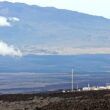Robert Fri Commentary
September 27, 2011
In his article Robert Socolow gets to the heart of how climate change science should be presented to policy makers and the public. His recommendation is to tell the story as straight as possible, even though that story is a bit complicated.
The challenge of explaining climate science is that while science can make a strong case that we should begin acting now to mitigate greenhouse gas emissions, science cannot yet tell us exactly what to do. That greenhouse gases result in warming the planet is black-letter science. There’s also a strong case that increasing the ambient concentration of greenhouse gases in a complex climate system will increase global average temperature, though as Socolow points out there is a range of possible temperature outcomes for a given dose of greenhouse gases. But it is very hard to predict impacts on the natural world or on human activities like farming; science has a lot to learn about impacts. Not a terribly tidy scientific story, but it’s clearly the one we’ve got and will have for some time to come.
The hard question that Socolow raises is whether telling this story would make a difference in the debate about climate change policy. I think it would do so in two ways. First, over time, understanding that there is a range of possible outcomes should help quiet the ardent advocates for one end of the range or the other. The climate debate is not a choice between the tails of a distribution, and allowing it to be so miscasts the debate in the public mind. Science should not be drawn into this false choice.
The other reason for hope is that, while it sounds complicated, dealing with uncertainty in policy is actually familiar territory for both policy makers and the public. Natural disasters always have a high degree of uncertainty — where a hurricane will make landfall, whether the levees will hold, when an earthquake might happen. And officials who deal with disasters have a very sensible strategy for dealing with this uncertainty: Hope for the best, but plan for the worst. I certainly hope that temperatures don’t rise very much as we pump more greenhouse gases into the air, but it’s only common sense to begin planning for something like the worst. That seems to me a story that’s responsible scientifically and makes sense to the public..
One other point. Socolow has found a new use for the famous Pacala-Socolow wedges. With the passage of time, they have become a measure of the cost of delaying action. We’re up to nine wedges from seven. That’s a story that’s easy to understand, too.
Robert Fri
Visiting Scholar
EXPERT COMMENTARY
Resources for the Future













